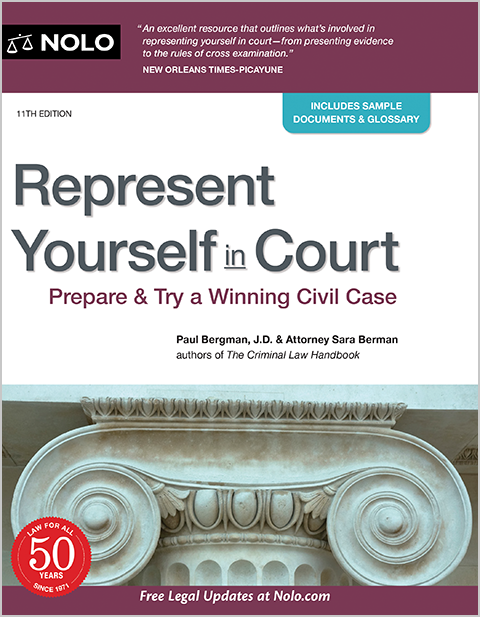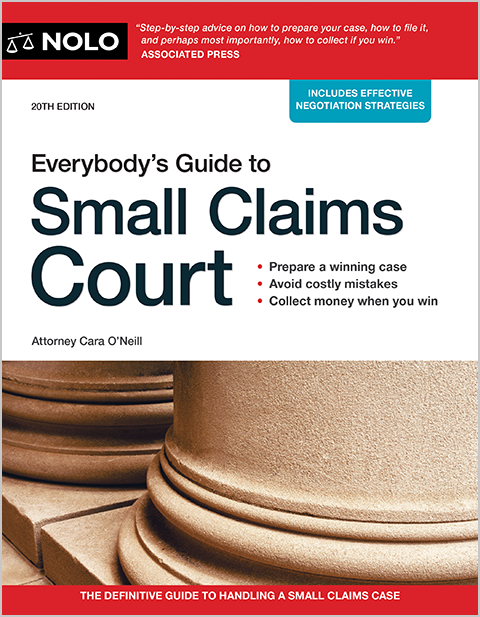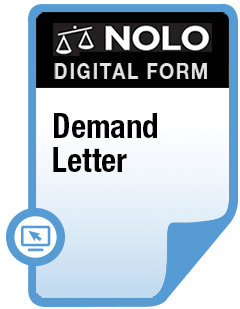You got a South Dakota money judgment. Now it's time to collect. We explain how to record South Dakota judgment liens, collect on a lien, extend your judgment, and more.
You went to court and got a judgment that says you're entitled to money from the party you sued, now called a "judgment debtor." What comes next? How can you—the judgment creditor—collect the money you're due? That's the focus of this article.
One way to collect is by putting judgment liens on the judgment debtor's South Dakota property. After a quick review of how judgment liens differ from judgments, we'll turn our attention to the specifics of South Dakota law. In particular, we cover:
- the kinds of property subject to South Dakota judgment liens
- how you put judgment liens on South Dakota property
- how long your judgment lien lasts, and
- the ways you can turn your judgment lien into money.
If you want some background information, here's more about how court judgments are collected.
- What's the Difference Between a Judgment and a Judgment Lien?
- Kinds of Property Subject to South Dakota Judgment Liens
- Property Exempt From South Dakota Judgment Liens
- How to Attach South Dakota Judgment Liens
- How Long Does a South Dakota Judgment Last?
- How Do You Turn a South Dakota Judgment Lien Into Money?
- Next Steps
What's the Difference Between a Judgment and a Judgment Lien?
A judgment is a court order that says a judgment creditor is legally entitled to a sum of money from a judgment debtor. But a judgment, standing alone, isn't self-enforcing. That is, you can't take a judgment to your county sheriff's office and demand that the judgment debtor's real estate be sold to pay you.
If you want to seize and sell the judgment debtor's property, you first have to attach your judgment to specific items of property. That's what a judgment lien does. As we discuss later, when your South Dakota judgment is docketed (recorded) with the clerk of the circuit court, it automatically becomes a lien on all nonexempt real estate owned by the judgment debtor in that county. Once that's done, you can look for ways to turn your judgment into cold, hard cash.
Kinds of Property Subject to South Dakota Judgment Liens
In South Dakota, you can attach judgment liens only to real estate, meaning land, houses, buildings, and other improvements. A properly docketed judgment attaches a lien to real estate the judgment debtor:
- presently owns, and
- acquires later, as long as your judgment lien is still good.
You can't put judgment liens on South Dakota personal property—cars, artwork, antiques, electronics, household furnishings, and the like. But that doesn't mean a judgment debtor always gets to keep their autos, boats, and other big ticket items. Even without judgment liens, there's a way to have the sheriff seize personal property.
If you're considering this step, speak to a South Dakota collection lawyer first. They can tell you whether it's worth your time and expense to go after the judgment debtor's personal property—and there's a good chance it won't be. If it's likely to be worthwhile, they'll guide you through the process.
Property Exempt From South Dakota Judgment Liens
Like all states, South Dakota exempts some property—both real and personal—from the reach of creditors. Dollar amounts mentioned here represent the maximum value of the debtor's exempt equity in the property, which might not be the same as the property's market value.
Here are a few examples.
- Homestead exemption. South Dakota provides an unlimited dollar value homestead exemption for a residence on up to one acre in town or 160 acres elsewhere.
- Wildcard exemption. In lieu of exempting specific items of furniture, appliances, and the like, South Dakota lets debtors choose items of personal property they want to keep—up to $7,000 worth for the head of a household, or $5,000 for all others.
- Clothing and provisions. All clothing, as well as provisions and fuel sufficient to last one year, are exempt.
- Health aids. South Dakota exempts all professionally prescribed health aids for the judgment debtor and their dependents.
How to Attach South Dakota Judgment Liens
Once it's docketed with the court clerk, a South Dakota circuit court judgment automatically becomes a judgment lien on all the judgment debtor's nonexempt real estate in the county where judgment was entered. No other steps are required.
To attach a lien in a different South Dakota county, or if your judgment is from the South Dakota magistrate court, follow these steps.
- Get a judgment transcript. Get a transcript (summary) of your court judgment from the clerk of the court that entered the judgment. Check the clerk's website for online or mail ordering information. If you don't find what you need there, call the clerk's office for instructions. Order one transcript for each county where you want to attach a judgment lien.
- File with the circuit court clerk. Next, file a judgment transcript with the circuit court clerk in each county where you want a lien. There will be a small filing fee. Once filed, the clerk will docket your judgment and it becomes a judgment lien on the debtor's nonexempt property in that county.
A South Dakota judgment lien expires 10 years from the date the judgment was docketed in the county where it was entered. So, for instance, say you got a Pennington County judgment that was docketed on June 1, 2023. On July 1, 2023, you filed a judgment transcript and had the judgment docketed in Lincoln County. Your Lincoln County judgment lien is good until June 1, 2033, unless the judgment is paid off sooner.
What happens if you haven't collected your judgment within 10 years? The short answer—explained in more detail below—is that you'll need to renew your judgment and extend your judgment liens.
How Long Does a South Dakota Judgment Last?
There are two important dates in the life of a South Dakota judgment:
- the dormancy date, and
- the statute of limitations.
The Dormancy Date
A South Dakota judgment becomes dormant—meaning it won't support a judgment lien—10 years from the date it was entered. A dormant judgment isn't quite dead, but it's not exactly alive, either. Think of it as a "zombie" judgment. If you want the judgment to support judgment liens, you must renew it.
- Renewing a judgment. At any time within 10 years from the date it was entered, you can renew a judgment by filing an affidavit of renewal with the clerk of the court. The affidavit must include all of the information required by the renewal statute, or it won't suffice to renew the judgment.
- Extending judgment liens. Filing an affidavit of renewal extends your judgment lien in the county where the judgment originally was entered. But to extend your liens in other counties, you must file a certified copy of the affidavit with the circuit court clerk in each county where you previously attached a lien. Check the clerk's website or call ahead for filing instructions.
The Statute of Limitations
A South Dakota judgment expires 20 years from the date it was entered. Once the statute of limitations runs out, your judgment is dead. Nothing you do will bring it back to life. You've lost the right to collect the money you were owed.
How Do You Turn a South Dakota Judgment Lien Into Money?
In general, there are three ways you can try to collect on a South Dakota judgment lien:
- negotiate a settlement
- wait for the judgment debtor to sell or refinance the property, and
- execute on your lien.
Negotiate a Settlement
If you want payment sooner rather than later, this is likely your best choice. No, you won't get all the money you're entitled to, but that's the nature of a settlement. You'll collect faster—and more inexpensively—than via the other two options.
Wait for the Judgment Debtor to Sell or Refinance
Most often, a buyer or lender will insist on clear title, free of all judgment liens. To sell or refinance, the judgment debtor will have to approach you to make a deal. Only now, you've got more negotiating leverage. As long as you're willing to sit tight and wait, this too is a low-cost, low-stress way to collect.
Execute on Your Lien
Executing on your lien means having the sheriff sell the judgment debtor's property at auction. This might seem like a tempting option. But before you head down this path, check with a local attorney to find out about the legwork and costs involved. In addition, see who's ahead of you in payment priority, or you might discover—too late—that the sale proceeds aren't enough to pay you in full (or at all).
Lastly, be aware that this step might be just the push the judgment debtor needs to declare bankruptcy. Should that happen, you're likely to be standing in a long, very unhappy line of creditors with little chance of getting paid.
Next Steps
We've covered South Dakota judgment lien basics, but of course, the devil's in the details. Now that you're familiar with South Dakota law, you might decide that your best option is to get help collecting your judgment. An experienced South Dakota creditor's rights or collection attorney can answer your questions and help you chart a collection path that gives you the best chance to maximize your recovery.
- What's the Difference Between a Judgment and a Judgment Lien?
- Kinds of Property Subject to South Dakota Judgment Liens
- Property Exempt From South Dakota Judgment Liens
- How to Attach South Dakota Judgment Liens
- How Long Does a South Dakota Judgment Last?
- How Do You Turn a South Dakota Judgment Lien Into Money?
- Next Steps



